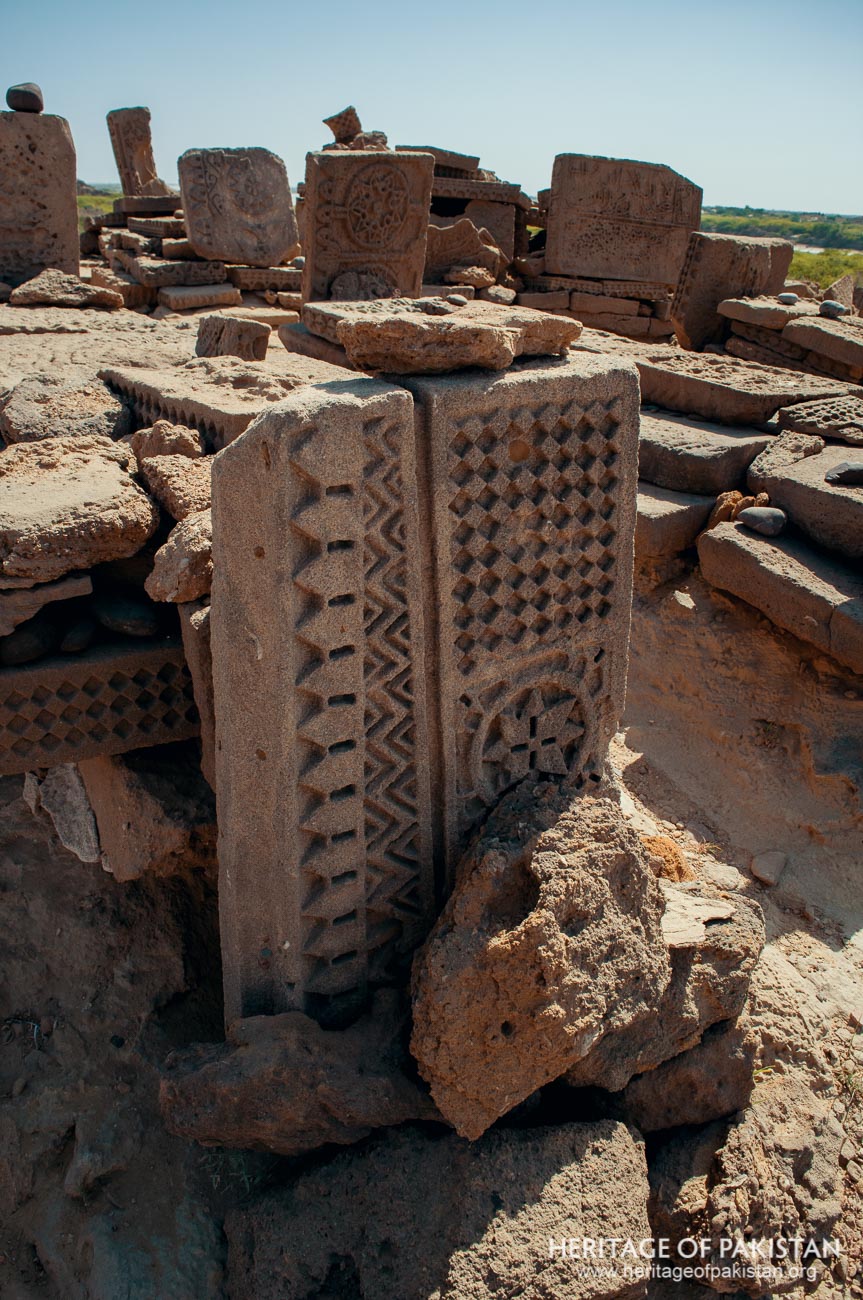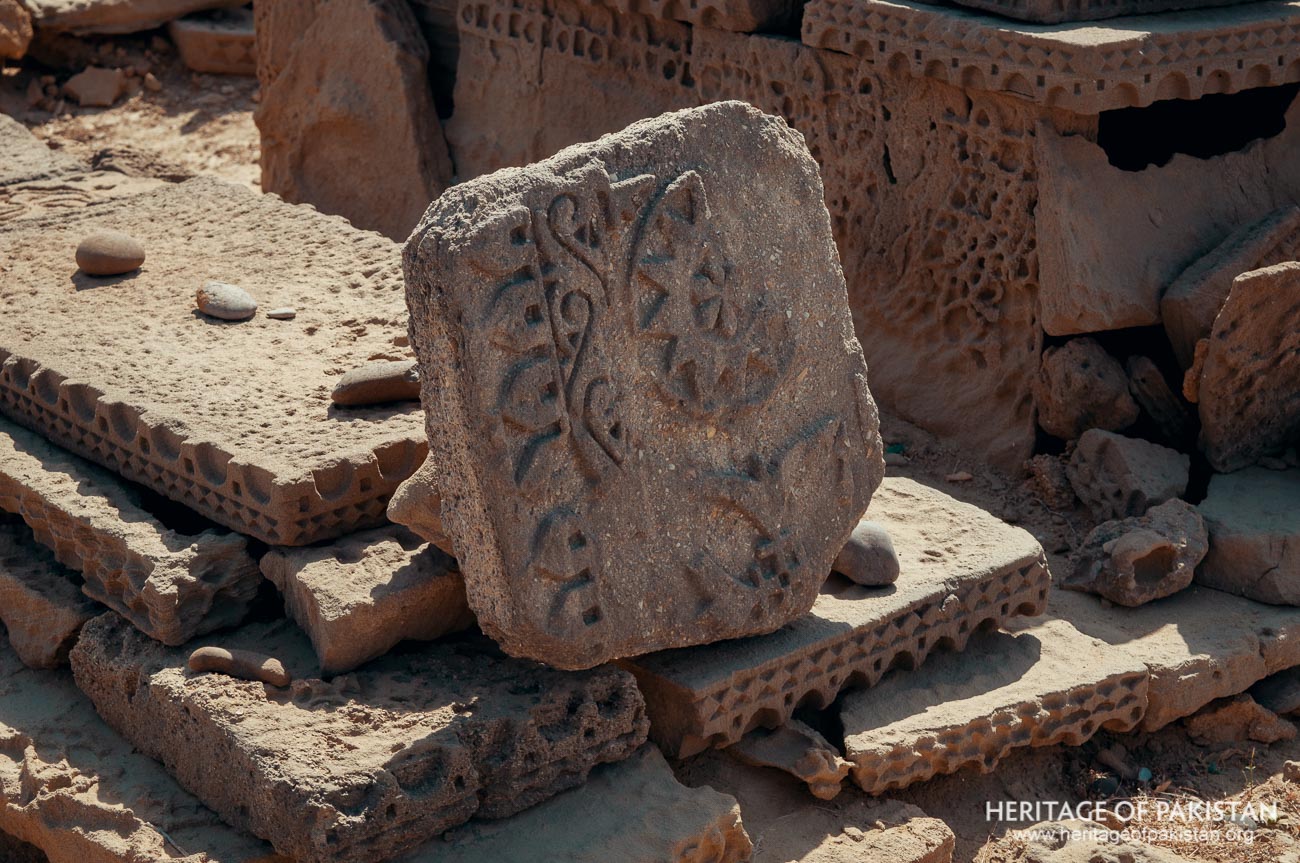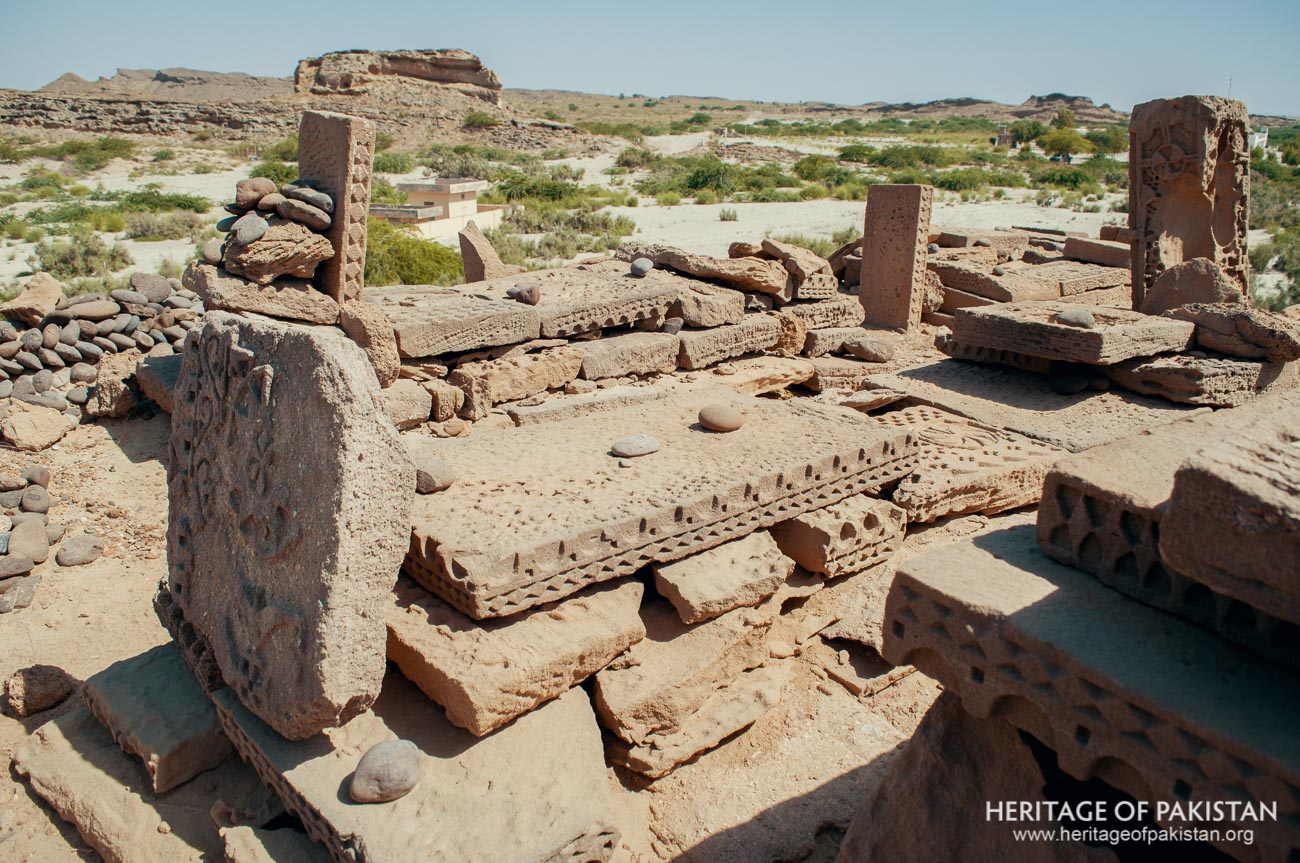Did You Know?
These graves feature intricate stone carvings in the Chowkandi style
25°26'48.5"N 65°32'41.7"E
These graves feature intricate stone carvings in the Chowkandi style
The Best Time to Visit Balochistan Province is Year long as it has bearable Cold winters and Hot Summers. However, Summers can get really Hot and precautions are recommended during Daytime visits.


The graves attributed to the soldiers of the 8th Century Arab invader Muhammad bin Qasim are located in Aghor, within Hingol National Park, Balochistan on the Makran Coastal Highway. Positioned on a small mound at the junction of the highway and the road leading to Hinglaj Mata Mandir, these graves have been associated with the Muslim General Muhammad bin Qasim. However, many scholars argue that this attribution is historically inaccurate, and the graves were likely constructed in a later period.
The graves are crafted from stone and adorned with intricate carvings and engravings that closely resemble the Chowkandi-style tombs near Karachi. This distinctive style of stone carving is believed to have originated in Gujarat before spreading to the regions now comprising Sindh. The artistic similarities between the graves and Chowkandi tombs suggest a shared cultural and architectural tradition rather than any direct connection to Muhammad bin Qasim’s campaign.
Muhammad bin Qasim, an Arab general, arrived in Sindh in 712 AD during the Umayyad Caliphate. Tasked by Hajjaj bin Yusuf, the governor of Iraq, he led an army to defeat Raja Dahir, the Hindu ruler of Sindh. This campaign marked the beginning of Islamic governance in the region, introducing early examples of Islamic architecture and earning Sindh the title ‘Bab-ul-Islam’ (Gateway to Islam). However, historical records, particularly the Chachnama, provide no evidence of his forces traveling through the coastal area where the Aghor graves are located.
According to historical accounts, Muhammad bin Qasim’s forces advanced from Shiraz to Turbat and then to Makran, where they were joined by Muhammad ibn Harun, the Arab overseer of the region. From Makran, they moved inland, bypassing the coastal route entirely. Their path lay approximately 60–70 miles north of the modern Makran Coastal Highway. After crossing Bela, the army advanced directly to Debal, where the decisive battle with Raja Dahir took place.

The geographical reality of Muhammad bin Qasim’s route further undermines the claim that the graves at Aghor are linked to him or his soldiers. The documented inland trajectory, combined with the distinctive style of the graves, points to a different origin altogether. The graves likely belong to a later period, reflecting local or regional traditions rather than the military campaign of Muhammad bin Qasim.
The attribution of the Aghor graves to Muhammad bin Qasim appears to be a result of local folklore rather than factual evidence. While the graves remain significant for their artistic and cultural value, their connection to the Arab invader is not supported by historical or archaeological findings.


Discover Graves of Soldiers of Muhammad bin Qasim image gallery and immerse yourself in stunning photographs

All Photographs by Syed Noor Hussain and Sania Azhar.
All Rights Reserved. Photos may be used for Non-Commercial, Educational, Artistic, Research, Non-Profit & Academic purposes.
Commercial uses require licensing agreement.


Add a review